
|
| |

|  Romania Romania
the awakening giant of Europe |

 Looking for lost prosperity - 1997 : A mixed performance - Rebuilding the Country - Looking for lost prosperity - 1997 : A mixed performance - Rebuilding the Country -
Major Infrastructure Projects March On - The Tough Game - No Pain, No Gain -
The Young Wolves of the Private Sector - What's Next? 
 Major Infrastructure Projects Going On Major Infrastructure Projects Going On
Besides the institutional infrastructure, it is the physical infrastructure where most progress has been made along the last few years. According to the Minister of Transport, Mr. Traian Basescu , big money have been pumped into the transport and communication infrastructure. As far as the transport infrastructure is concerned, more attention has been paid so far to the road network, as it accounts for 65 percent of the passenger transport and for 80 percent of the freight transport; rail transport should become the top priority starting this year.
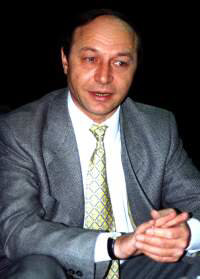
Romania has almost 73,000km of roads, out of which 14,700km are national roads. Most of these national roads (over 70 percent) have their life cycle expired and need urgent upgrading. 4,680km of the national roads are included within the European Road Network -- the so-called "E" roads -- and consequently enjoyed special treatment from the authorities. By January 1, 1997 a special fund for public roads has been set up, fed by 25 percent of the wholesale price of fuels, by 5 percent of the price of road vehicles (custom value of the imported vehicles included), and by a fixed lump tax to be paid by vehicle owners. 65 percent of this fund is due to the maintenance and upgrading of the national roads, the rest going to county and communal roads.
As mentioned, the road rehabilitation program, led
by the National
Roads Administration , puts a special emphasis
on the roads of European importance. The program,
designed to have three stages, presumes financing
worth some $2.5 billion and started in 1993, being
accelerated during the last two years. The first
stage was already completed. At a cost of $405 million,
1,053km of roads along the European transport corridor
IV -- that crosses Romania from West (Arad, Oradea)
to Southeast (Constanta, on the Black Sea coast),
passing through Sibiu, Pitesti and Bucharest --
were brought to international standards.
With a historic heritage of over 140 years, the Romanian National Railways , RNR, is one of the largest European railways -- it ranks fourth in Europe in terms of freight transport (outperforming countries like Italy and UK) and sixth in terms of passenger transport. Coal, burned by country's power plants, account for one third of the freight. The company operates a network with a total length of 11,365km, out of which 25 percent is made of double lines and 45 percent are electrified railways. The rolling stock consists in some 140,000 freight cars and 6,400 passenger coaches; RNR has a traction park of about 2,200 Diesel locomotives and 1,000 electric locomotives. RNR is likely the largest employer in Romania; it employs over 130,000. This overstaffing accounts for the large share (about 50 percent) of labor expenses in the cost structure.
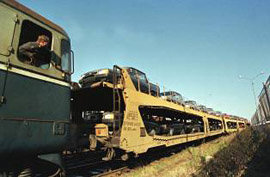
Company's most important problem is the quality of the infrastructure. The same European multimodal transport corridor IV -- which will likely become the most important transport route between Europe and Central Asia, Near and Middle East -- is the top priority for RNR too. RNR’s CEO, Mr. Viorel Simut, estimates that some $1.3 billion would be needed to enhance the quality of this track -- primarily in terms of safety and transit speed increase up to 200km/h -- to European standards. About half of the $450 million foreign funding (EBRD, the World Bank, EU's PHARE program) will be dedicated to improvement works on these segments, with the rest going to other areas, such as rolling stock, IT systems, and a large optical fiber cable network with the related transmission equipment. This last project is particularly interesting, as chances are that the huge information transport capacity of a optical fiber cable network will exceed by far RNR's needs and will turn the company into a significant player in the telecommunication business. A restructuring strategy was set up for the company. According to its provisions, infrastructure and commercial activities will be separated as independent profit centers, while some non-core businesses will be spun off. Minister Basescu clearly stated that RNR is ministry’s top priority for 1998.
The situation of water transportation systems is rather mixed. During the communist regime Romania used to have one of the largest commercial fleets in the region. Poor management and arguable decisions at governmental level are to be blamed for the actual condition, when the ocean fishing fleet has virtually disappeared and the sea-going commercial fleet is in dire straits. Few (if any) new vessels have been added to the fleets of the three Romanian state-owned shipping lines, while many older ones have either been sold or scrapped to cover losses. Many vessels were leased to almost unknown, shelf companies that mortgaged or abandoned them in various harbors around the world.
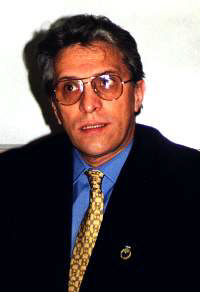
Once the pride of the Romanian commercial fleet, Petromin -- the company that owns and operates the Romanian oil tankers and ore bulk carriers -- has been in the midst of endless rows and shady deals. The State Ownership Fund (SOF) has recently decided to privatize what was left of these companies (Petromin, Romline and Navrom), and signed a contract with the Dutch ABN Amro to advise on the selloff.
Things are in far better shape regarding the harbor infrastructure. Besides upgrading works done in Romania's harbors on the Danube -- works that relate primarily to navigation safety -- most resources are pooled in the development of country's premier sea harbor, Constanta. When all the investment projects will be completed, the 100 years old Constanta harbor -- already by far the largest Black Sea harbor -- will become one of Europe's largest harbors, second only to Rotterdam. Constanta has an ideal position for that, as the port is located at the crossroad of two European multimodal transport corridors (IV and VII, the Danube), while the Danube-Maine-Rhine river and canal system offer the opportunity to transport commodities on water up to the North Sea. An important asset, the Danube-Black Sea Canal (which shortens the way by some
350km) has its mouth within the Constanta South port boundaries. Constanta will have a traffic capacity of 233.5 million tons per annum (83.5 million tons per annum so far), and it will total 65.45km of quays (28.52km to date), 282 berths (132 to date), being able to accommodate sea-going vessels of up to 250,000 DWT. "Last year we had earnings before taxes of over $6 million, as the traffic was of 42.5 million tons, a little bit lower than the 1996 45 million tons figure," says Mr. Emil Visoianu, the General Manager of Constanta Port Administration. Many development projects are going on in what is supposed to become Europe's Eastern commercial gateway.
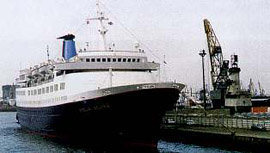
Three American companies joined forces with three Romanian companies within the oil business to build a LPG terminal. A new maritime station will be also built, in order to improve the services offered to passenger traffic, as regular ferryboat lines operate between Constanta and the Turkish port Samsun, other lines
(towards Georgian harbors) being under study. One 100,000 tons grain silo is under construction, and according to traffic forecasts, other 240,000 tons grain storing capacities are needed. Although the port has an operational container terminal with a capacity of some 100,000 TEU per annum, present and foreseen needs are way beyond this figure. The government secured a Japanese loan worth $120 million which will be used -- besides some works for expanding the useful area of the port by building and strengthening breakwaters in the Constanta South port – for enhancing the capacity of the container terminal to about 330,000 TEU per annum in the first stage, that should be completed in
2001. By the end of the second stage, planned for 2008, this capacity should reach 800,000 TEU per annum. The port also operates a wide variety of terminals, from general cargo to ores, cement, chemicals, crude oil etc. "What is very important for us is to transform the Port of Constanta into a distribution center for the neghboring countries, around the Black Sea and from Central Asia," explains Visoianu.
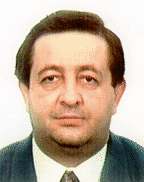 | "We try to play in this region the same role that Rotterdam is playing in Western Europe," adds Mr. Aurel Carp, advisor of the GM. Country’s biggest shipyard is neighboring the port. The danger of environmental liabilities will be significantly reduced, as a first 2,500 tons capacity unit of mobile ecological incinerator (a venture with a Danish and an Austrian company) will start operations. As Romania’s largest free zone (with an area totaling to date 177 hectares, with possibilities for enlargement, if needed) is also located within port’s boundaries, chances are that Constanta will become in the coming years the second largest economic center in the country, after Bucharest. At least this is what Mr. Visoianu believes:
"We also intend to build a business center here, that will provide business facilities both to the city and to the port. There’s enough room here for everybody, in all the activities." The free zone could be of paramount importance for city’s future. "Another mission of this free zone," says Mr. Ionica Bucur, Marketing, Port Policies and PR Manager, "is to facilitate the local and regional development." A very recent event that may turn Bucur’s assessment into reality is the decision of the countries in the region to set up in the Constanta Free Zone of a regional exchange, the Black Sea Commodities Exchange. It should trade primarily grain and oil, and boost business opportunities by supplying a key missing link – a functional market. "A powerful Russian oil company is buying oil refineries in Romania and the crude will transit the port and will be delivered to the refineries by pipes," continues Visoianu. Lukoil, Russia’s second largest oil baron, has recently acquired Petrotel, one of the biggest and most complex Romanian oil refineries – and rumors are that it is looking for more. A smaller refinery, Darmanesti, was bought by a Cyprus-based consortium, also representing Russian interests.
There is not much of a difference between the condition of the water and air transportation systems. The troubled national air carrier Tarom has incurred in the last few years heavy losses. Frequent management changes at the helm (in the last two years the company had a new CEO about every six months), severe problems with the trade unions that developed an elite organizational culture, overstaffing, several ill-fated flight incidents and, above all, an obvious lack of a strategy flew Tarom full speed into a deep crisis. Company’s loss reached in 1997 an all-time-high of $30 million. The government recently secured sovereign guarantees for a $30 million loan granted by ABN Amro, to be used for the purchase of two more ATR turboprops. The acquisition of a new Boeing 737 jet is also foreseen. The main lines of the restructuring program Tarom was submitted to are fleet renewal – with Russian made aircrafts scrapped or sold and the respective staff laid off – and the pledge for a strategic partnership with a foreign carrier. The name most frequently mentioned in that context is TWA.
For a country of its size, Romania has its fair share of airports. The deregulation, decentralization and liberalization policy that the government refused to apply to Tarom is being fully implemented for the airports. Out of a total of 17 airports, only the four largest remained under central governmental control. The other airports -- many of whom underwent significant upgrading -- are being passed under the authority of the local city halls. As most municipalities lack the financial resources needed to maintain and upgrade the runways and the facilities, they are very opened to business and partnerships with local and foreign investors. By far the largest share of the resources has been focused on country’s main airport, Bucharest-Otopeni. Investments in excess of $120 million
– evenly financed from the state budget and from external loans – will be finalized this year by the commissioning of a new terminal, passenger station and of airport’s second runway.
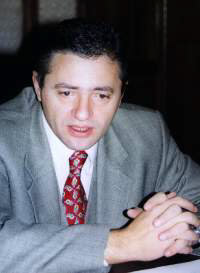
Everything went faster and smoother in the telecommunication sector, where major improvements can be noticed as compared with the situation as of early ‘90s. The remark of the young and dynamic Minister of Communications, Mr. Sorin Pantis –
"We can say that the communications sector is at the front of the Romanian economy." – is fairly accurate. The industry continues to be dominated by the state-owned national phone company, Romtelecom. Although it continues to be a monopoly, a lot of progress has been made regarding its transformation into a free market player.
First of all, massive investments were funneled into the telecommunication infrastructure. Romtelecom owns and operates now a brand new, state-of-the-art fiber optics cable network with a total length of over 7,000km
– with Ericsson getting lion’s share of this business. About half of the old, obsolete analog switching systems have been replaced with new, digital technology. The local market for this type of devices is dominated by joint ventures made by local companies with world leaders of the sector – Alcatel, Siemens, and Goldstar. As the radio relays network has also enjoyed significant investment, Romtelecom’s main problem consists in the home, subscriber network. Although as compared with the previous years in 1997 Romtelecom was more active in hooking up new subscribers, the replacement of thousands of kilometers of wiring within cities is a titanic goal – not to mention the associated costs. Therefore, the opportunity of developing a strategy pursuing the setting up of radio local networks is being investigated.
The company has been turned from a state-run and controlled organization into a joint stock company, with the state the only shareholder so far. The move was seen as the first move towards privatization. The first stage of Romtelecom’s privatization will take place during the first half of this year and will definitely be the largest single privatization deal to date. Advised by Goldman Sachs, the state will sell 35 percent of the company, hopefully to a strategic investor, a major foreign telecom operator. Forecasts on the price of the selloff vary wildly: "Some $600 million," according to Mr. Valentin Lazea, a Deputy Minister of Finance, well over $1 billion according to sources within the Ministry of Communications. Big boys like Deutsche Telekom and France Telecom are already putting mega bucks on the table. At this point, Romtelecom’s most attractive assets seem to be its optical fiber backbone network and, perhaps more important, the monopolistic position the company will still enjoy in the basic phone service until January 1, 2003. On the dark side, company’s major weakness is the rather low density of phone lines in Romania (about 13 lines/100 inhabitants), far below the European average. Overstaffing and kind of tensed relationship with the trade unions could be another. The second privatization stage will include the divestment of another 60 percent of state’s stake through a combination of methods; the remaining 5 percent will be sold with special facilities to company’s employees.

Except for the basic service and the access to infrastructure on a commercial basis, most of the other segments of the telecommunications market have been fully liberalized -- namely value-added services, data transmission, satellite communications, cable operations. However, the most important and spectacular evolution on the telecom market was that registered by the mobile phone services. Until late in 1996 Romania had only one mobile phone company, Telefonica Romania, a Romanian-Spanish joint venture, operating NMT analogue technology. By the end of 1996 two GSM licenses made the object of a tough auction, a battle amongst some 5-6 consortia. By the end of November 1996 the World Investment News Ltdrs were selected: Mobifon (a consortium controlled by the Canada-based Telesystems International Wireless, with the US-based Air Touch Communications holding a 10 percent stake) and MobilRom (a consortium controlled by France Telecom). For its part, Mobifon set a world record in the GSM business regarding the speed of the launch: on April 15, 1997, it launched Romania’s first GSM service, Connex GSM .
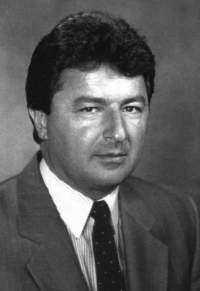
Almost two months later, MobilRom’s service, Dialog, was on air. Mr. Al Tolstoy , Mobifon’s President & CEO offers a look into his company’s business philosophy:
"While coverage is important, our focus is on brand awareness and the quality of our network and services. In the space of one year, Connex GSM has been acknowledged, by consumers, as reflecting quality, innovation and trust. Ask most Romanians and they’ll tell you that Connex is a World Investment News Ltdr, it’s the better service and it’s the innovator. The fact that we bring a strong North American flavor to our initiatives has further solidified our advantage. Our Romanian target audience truly loves and seeks out North American goods and services." MobilRom chose a different strategy. Explains Mr. Andrei Chirica, MobilRom’s President: "Our top priority was to develop our own infrastructure, so we can cover the entire country – and we almost reached this target. In our turnover, roaming has a very important place, we have now more than 70 countries in this service. We are also going to be involved in the Republic of Moldova."
Both companies grew fast – five to six times faster than initially expected – which raised not only technical, but also organizational issues. Al Tolstoy is confident in the organization he built in a very short time: "Strong leadership at the top can net good results, however, it’s strong leadership throughout the corporation that achieves exceptional results."
Pledging for an increased attractiveness of Romtelecom for a potential suitor, the government granted it a new mobile phone (DCS) license; another one, the fourth, should be the subject of a public tender. Says Mr. Tolstoy: "It’s our view that Romania will have difficulty supporting a third and fourth wireless network. More importantly, it is our expectation that the government will follow similar examples across Europe and ensure that the initial GSM operators are given sufficient lead time to build their businesses. This safeguard is essential before the next wave of operators launch their services. A regulatory body that is independent and impartial must be established to ensure adherence to a fair process for all involved." |
© World INvestment NEws, 1998.
This is the electronic edition of the special country report on Romania
published in FORBES
Magazine's enriched with complementary information,
such as full interviews, detailed company files and more.
June 1 st 1998 issue
Developed by AgenciaE.Tv |
|
|
|
| |
| | | |
|

